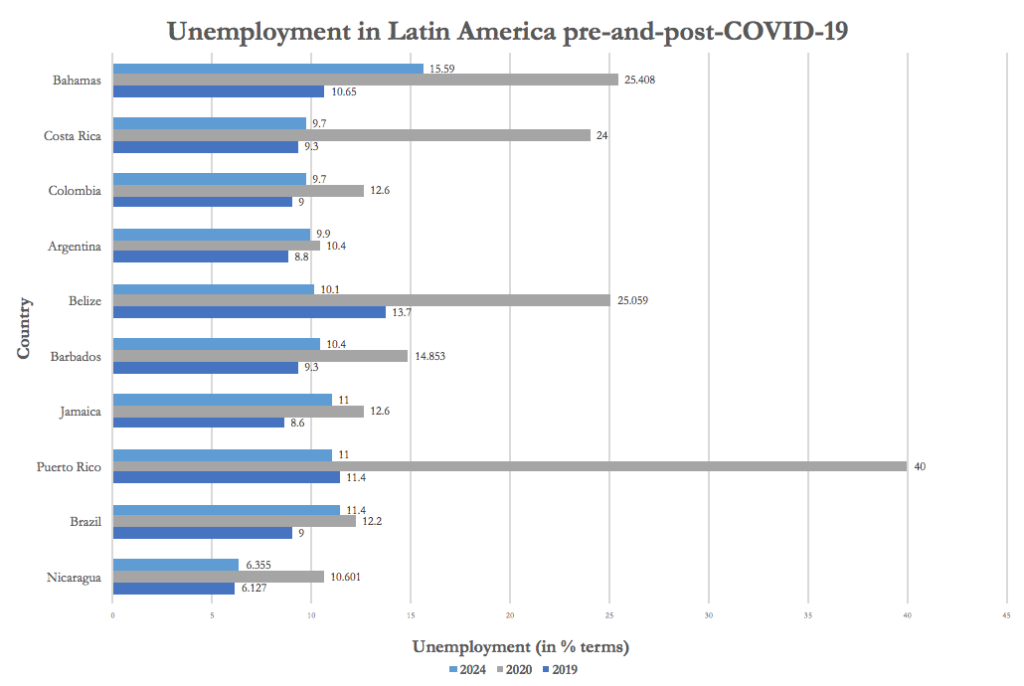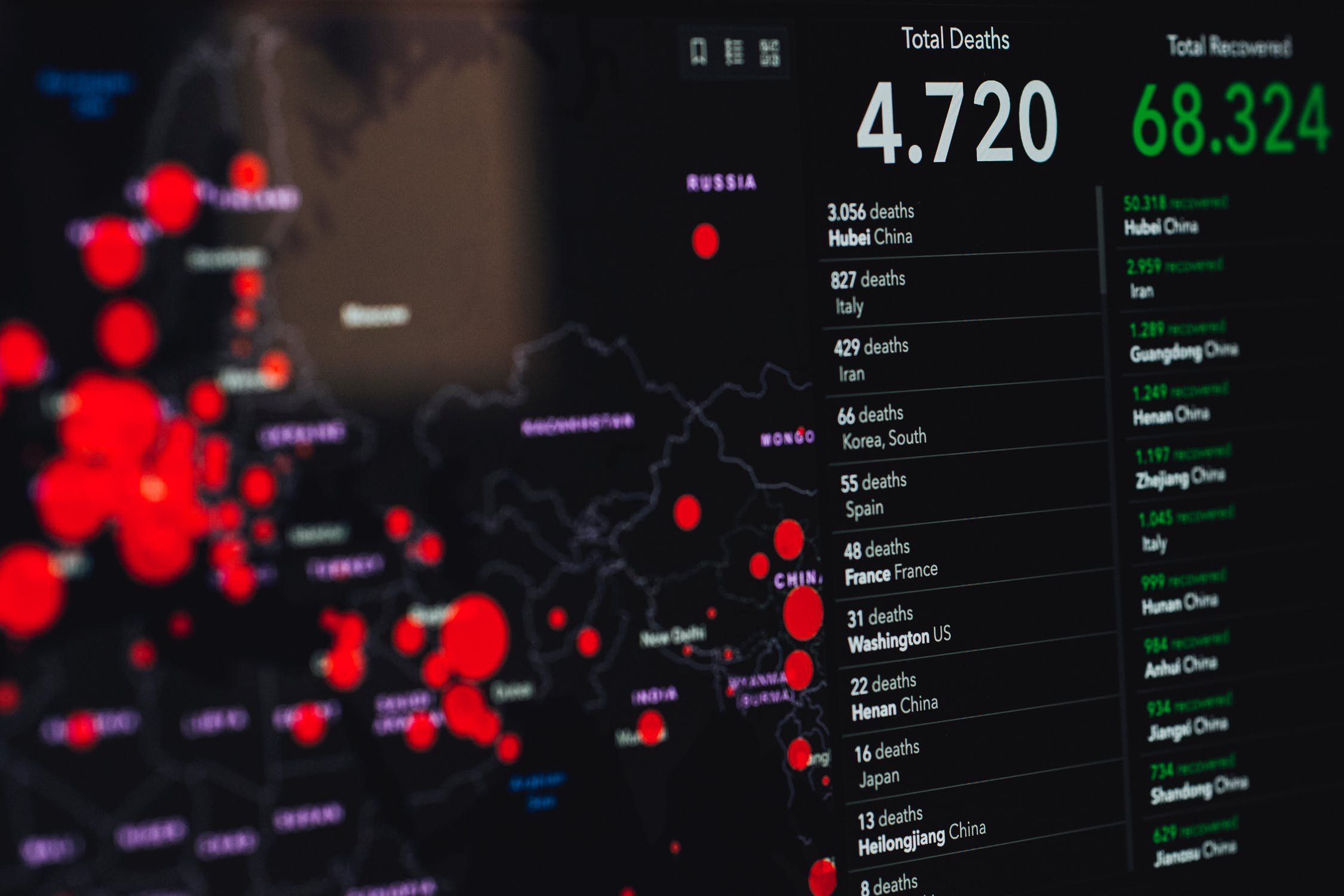EXPERT
Issues
Locations
DOWNLOAD

Overall Outlook
- IMF estimated regional real GDP contraction in 2020: 8.1%
- Total COVID-19 cases in Latin America: 10.4 Million
- Total COVID-19 related deaths projected by the end of October: 388,300
- Average COVID-19 case fatality rate in Latin America: 3.60%
Significant Shocks
A majority of countries in Latin America and the Caribbean rely heavily on international trade and tourism, as well as other key exports such as oil, which have all been directly impacted by the novel coronavirus. In Costa Rica, the economy is hugely dependent on tourism accounting for 8.2% of the nation’s GDP and the employment of 220,000 people.
Aside from the Bahamas, Costa Rica currently has the highest unemployment rate in the region at 24% as a result of the pandemic. Therefore, Costa Rica announced a $1.5 billion economic package targeted at small to medium-sized businesses, to be used for liquidity or re-opening costs. Moreover, Latin America’s airline industry was also severely impacted by COVID-19. By July, three major regional airlines (Aeromexico, Avianca, and LATAM) filed for Chapter 11 bankruptcy. In September, the CAPA centre for aviation reported that Latin American low-cost carriers took 58% of market share as a result of the virus.
Lastly, the record low oil prices in 2020 have caused additional shocks for export-oriented countries in Latin America that rely on oil and gas as one of its top exports, notably in Brazil, Ecuador, Colombia, and Mexico.
Unemployment in Latin America

Lending for Vulnerable Countries
- Peru: MRA $415,000
- Chile: MRA $20,000
- Mexico: TOTAL $1.8m
- Panama: TOTAL $825,000
- Bolivia: MRA $130,000
- Argentina: MRA $300,000
Fiscal Policy
A majority of countries in Latin America began implanting fiscal policy responses to COVID-19 in mid-March. Of the policies, the following were the most notable:
The Family Emergency Income Program (Argentina): Minister of the Economy Martín Guzmán and Labor Minister Claudio Moroni announced the implementation of a family emergency income program, giving families $157 for the month of April, with a potential extension. This program is meant to aid self-employed and informal workers between the ages of 18 and 65 who have suffered income losses due to the pandemic. In addition, the government announced that it will be implementing salary increases for medical workers at both public and private hospitals in order to incentivize the medical field’s continual efforts in combatting coronavirus.
Worker’s Severance Fund (Brazil): On April 7, 2020, $4 billion was added to the Workers’ Severance Fund, allowing for withdraws of up to $200 per worker starting on June 15th. In addition, the Brazilian Senate approved a bill offering a credit line of roughly $2.1 billion to small businesses, provided that they do not lay off employees.
Plan Proteger (Costa Rica): On April 9, 2020, The government announced a stimulus plan known as Plan Proteger via an online platform in order to provide Costa Ricans who have lost their jobs or are facing income insecurity with a monthly bonus of up to $220 for the next three months.
Bono Familia (Guatemala): The president announced a $26 million emergency fund called the Bono Familia to aid families and
disperse $129 to those who meet criteria and are in need of aid in covering the costs for electricity, water, and supplies. The program also aids private-sector workers by providing an up to $10 daily stipend.
Reactiva Peru (Peru): The economic relief program, Reactiva Peru, was launched by the government, which seeks to guarantee up to 98% of business loans of $9,000 or less for companies to pay employees and suppliers. The payment term can run up to 36 months and was enacted via Legislative Decree No. 1455. The main goal of the program is to replace working capital funds of companies that have temporary labor obligations or those that need assistance in paying suppliers.
Foreign Aid
Peru: One of the largest aid packages destined for Latin America, Peru will receive approximately $6 million in aid in response to COVID-19. This includes $415,000 in new MRA aid targeted at supporting the COVID-19 response for refugees and host communities, $3 million in earlier announced funding for addressing economic concerns resulting from COVID-19, including addressing security issues and drug trade, and another $2.5 million in already announced aid to improve overall medical operations and management responses to the pandemic.
Chile: $20,000 in new MRA humanitarian assistance will be distributed to aid in the overall COVID-19 response for refugees and host communities.
Mexico: Approximately $1.8 million in new MRA aid to support the impact of COVID-19 on refugees and host communities.
Panama: A total package of $825,000 was announced, including an earlier announced $750,000 for improving the overall health capacity of Panama as a result of COVID-19 and an additional new sum of $75,000 for MRA assistance to refugees and host communities.
Bolivia: Approximately $900,000 in aid will be dispersed to the country specifically as a response to the COVID-19 pandemic. This aid is composed of $750,000 of previously announced health assistance to improve overall medical operations and management and $130,000 of new MRA aid to support refugees and host communities.
Argentina: MRA humanitarian assistance to support COVID-19 response and recovery for refugees and host communities will increase by $300,000.


 Allison Reichel
Allison Reichel